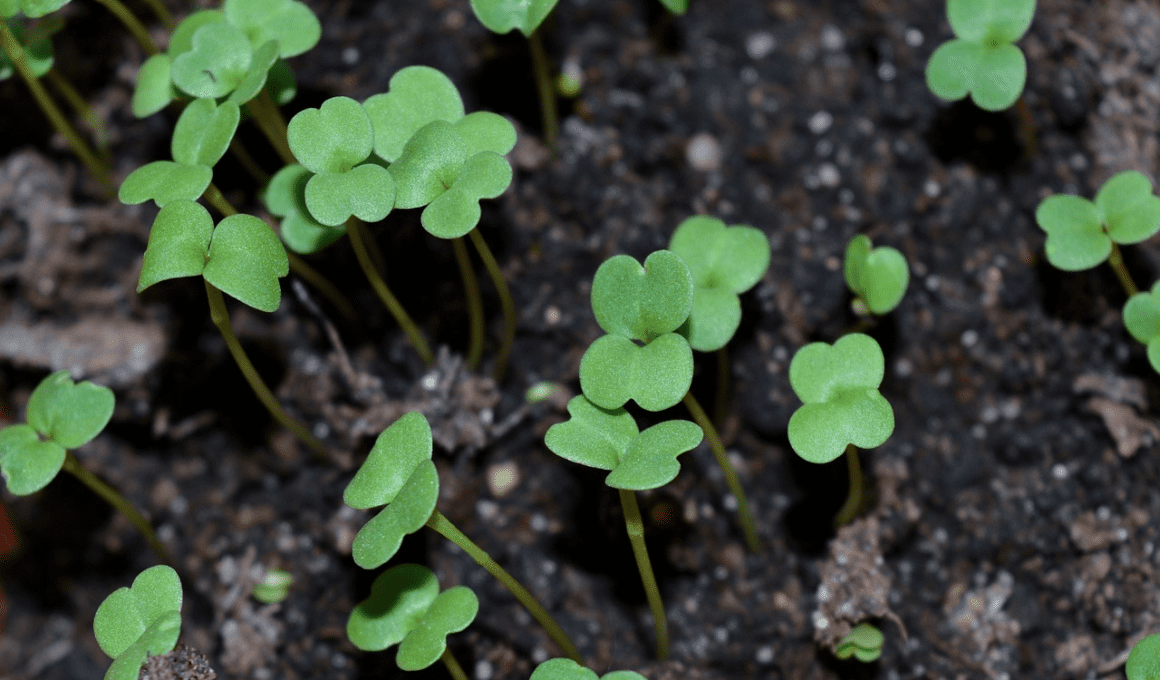Quick Takeaways
- Opt for seeds labeled for microgreen use
- Choose quick-growing seeds with strong flavor (radishes, broccoli, kale, mustard greens)
- Avoid chemical-treated seeds to prevent crop contamination
- Careful seed selection can lead to profitable microgreen business opportunities
Does Soaking Seeds Improve the Growth of Microgreens?
Soaking seeds before planting can promote faster, healthier growth with seed soaking. This pre-germination process helps activate enzymes that kickstart growth and can enhance the absorption of essential nutrients. By providing optimal conditions and moisture levels, soaked seeds tend to sprout faster, resulting in vibrant microgreens with improved growth potential.
Best Seeds to Use
If you want to guarantee the best flavor and texture for your microgreens, choosing the right seeds is crucial. Some seeds perform better than others, ensuring successful seed germination and optimal growing conditions. It’s essential to select seeds that are specifically labeled for microgreen use, rather than using regular seeds. When picking seeds for microgreens, opt for those that are quick to grow and have a strong flavor. Radishes, broccoli, kale, and mustard greens are all popular choices for microgreens. It’s also crucial to avoid chemical-treated seeds, as they may contaminate your crop. By carefully selecting your seeds, you can increase your chances of success and enjoy delicious, nutrient-dense microgreens.Seed Selection Tips
To increase your success in growing flavorful and textured microgreens, carefully choosing the right plant seeds is crucial. Here are some seed selection tips to help you grow healthy and delicious microgreens:- Choose seeds that are specifically labeled for growing microgreens. These seeds are often untreated and free of chemicals, making them safer to consume.
- Avoid using old or expired seeds. Old seeds may not germinate properly, leading to poor growth and seedling health.
- Consider the growth rate of the seeds. Fast-growing seeds like radishes and broccoli are popular choices for microgreens, but slower-growing seeds like sunflowers can also produce great results.
- Take note of the seedling health. Avoid using seeds that produce weak or spindly seedlings, as these may not grow into strong, healthy microgreens.
- Watch out for common mistakes like over-seeding or under-watering. These mistakes can lead to overcrowding or poor growth, affecting the overall health of your microgreens.
Expert Advice
For expert advice on growing healthy and flavorful microgreens, choose seeds labeled for microgreen growing and paying attention to seedling health and common mistakes. While regular seeds can be used for growing microgreens, certain seeds perform better than others. It’s important to avoid seeds that may be toxic during early growth phases or have digestive issues. Additionally, chemical-treated seeds should be avoided for growing microgreens. To simplify seed selection, special microgreen seed blends are available. These blends are designed to provide a variety of flavors and textures while simplifying the selection and harvesting process. Careful seed selection can increase microgreen growing success and even lead to profitable microgreen business opportunities. Remember to always prioritize the health and safety of your microgreens by avoiding any potential toxicity of certain seeds.| Seed Selection Tips |
|---|
| Choose seeds labeled for microgreen growing |
| Pay attention to seedling health and common mistakes |
| Avoid seeds that may be toxic during early growth phases or have digestive issues |
| Avoid chemical-treated seeds for growing microgreens |









